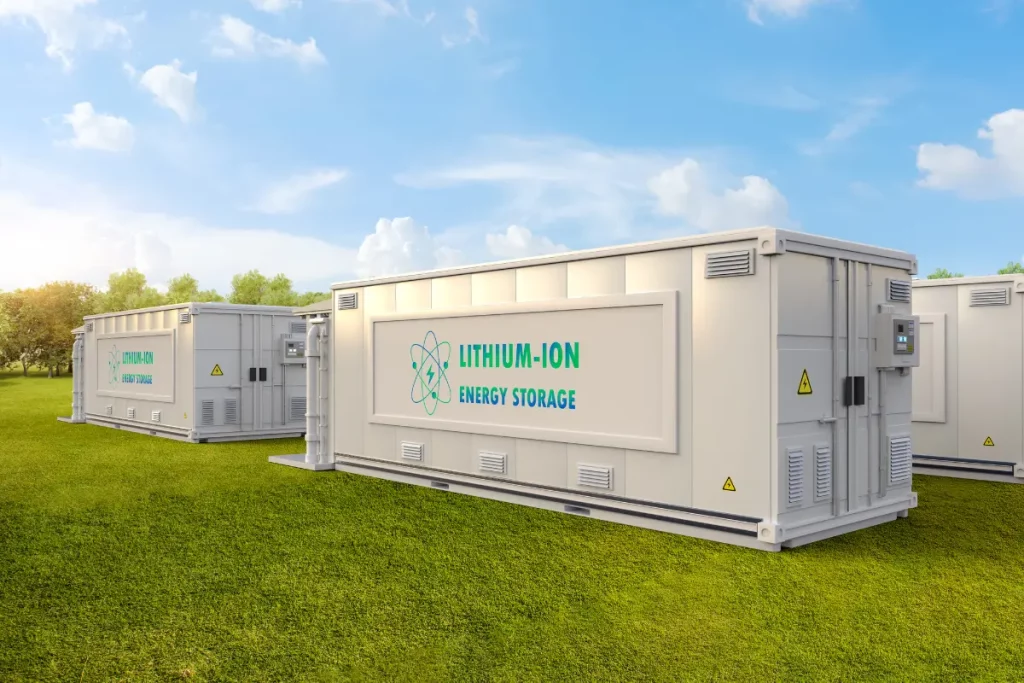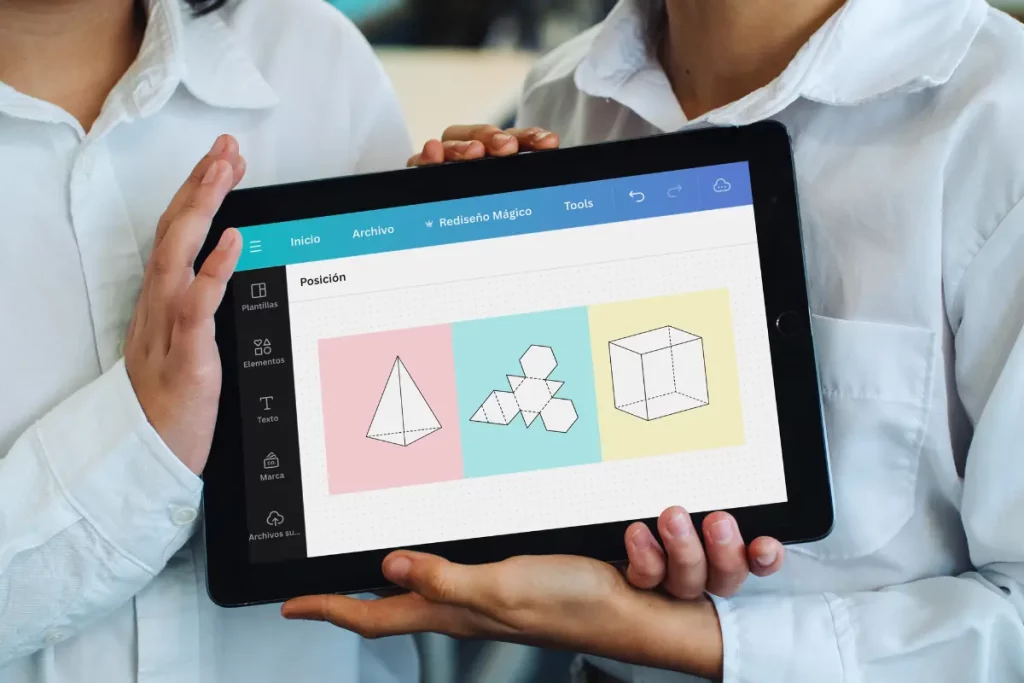This article is from the Automotivean website to discuss about lithium ion battery settlement.
Lithium-ion batteries have become ubiquitous in modern life, powering our smartphones, laptops, electric vehicles, and even grid-scale energy storage systems.
However, behind the scenes, the industry has faced legal challenges and settlements that have far-reaching implications.
This article explores the intricate world of lithium-ion battery settlements, delving into their historical context, key players involved, environmental impacts, technological ramifications, market effects, global regulations, safety standards, and more.
Lithium ion battery settlements refer to the legal agreements reached between various parties in the lithium-ion battery industry.
To resolve disputes related to issues such as intellectual property infringement, safety concerns, environmental harm, or unethical practices.
These settlements are crucial in shaping the future trajectory of the industry and ensuring accountability and responsibility among stakeholders.
The significance of lithium ion battery settlements cannot be overstated, particularly in the technology and energy sectors.
These agreements impact consumer trust, innovation, regulatory compliance, environmental sustainability, and the overall competitiveness of companies operating in the space.
Understanding the nuances of these settlements is essential for grasping the complexities of the lithium-ion battery industry.
Historical Context of Lithium Ion Battery Settlement
Evolution of Lithium Ion Batteries Settlement
Lithium-ion batteries represent a milestone in energy storage technology.
It offering higher energy density, longer cycle life, and faster charging capabilities compared to traditional battery chemistries.
The evolution of lithium-ion batteries can be traced back to the 1970s when researchers began exploring the potential of lithium as an electrode material.
Since then, continuous research and development have led to the commercialization and widespread adoption of lithium ion batteries across various sectors.
Emergence of Settlement Issues
As the adoption of lithium-ion batteries increased, so did the complexities and challenges associated with their production, use, and disposal. Issues such as safety incidents, environmental contamination, supply chain disputes, and intellectual property conflicts have emerged, leading to legal disputes and subsequent settlements among industry players.
Key Players Involved in Lithium Ion Batteries Settlement
Companies in the Lithium Ion Battery Industry
The lithium ion battery industry is characterized by a diverse range of players.
Including battery manufacturers, suppliers of raw materials, technology providers, electric vehicle manufacturers, and energy storage companies.
Some of the key companies involved in the sector include Tesla, Panasonic, LG Chem, Samsung SDI, CATL, and BYD, among others.
Legal Entities and Government Bodies
Legal entities and government bodies also play a crucial role in regulating the lithium ion battery industry.
It also oversees compliance with quality standards, safety regulations, environmental laws, and intellectual property rights.
Entities such as the US Environmental Protection Agency (EPA), Federal Trade Commission (FTC), and International Trade Commission (ITC).
Various national regulatory agencies are actively involved in monitoring the industry.
Lawsuits and Litigation
Overview of Major Lawsuits
Over the years, the lithium ion battery industry has witnessed several high-profile lawsuits and legal battles involving allegations of safety defects, patent infringement, trade secrets theft, price fixing, and environmental violations. Notable cases include the Toshiba-SanDisk dispute, the LG Chem-SK Innovation feud, and the Panasonic-Tesla partnership agreements.
Legal Arguments and Counterarguments
Legal arguments in lithium-ion battery lawsuits often revolve around issues of product liability, breach of contract, negligence, fraud, antitrust violations, and regulatory non-compliance. Companies leverage their legal teams to present arguments and counterarguments in court, aiming to reach a mutually agreeable settlement that resolves the underlying issues.
Environmental Impacts
Lithium Ion Batteries and Environmental Concerns
Despite their numerous advantages, lithium-ion batteries pose environmental challenges related to the extraction of raw materials.

And also energy-intensive production processes, transportation emissions, and end-of-life disposal.
The mining of lithium, cobalt, and nickel can lead to habitat destruction, water contamination, and carbon emissions, raising concerns about the sustainability of battery supply chains.
Settlements Aimed at Environmental Remediation
In response to environmental concerns, some lithium ion battery settlements include provisions for environmental remediation, sustainability initiatives, recycling programs, and carbon footprint reduction targets.
Companies are increasingly focusing on enhancing the eco-friendliness of their products and operations to mitigate the environmental impacts of battery production and usage.
Technological Ramifications
Impact on Battery Technology Advancements
Lithium ion battery settlements have significant implications for the advancement of battery technologies.
As they may influence research priorities, investment decisions, technology licensing agreements, and collaborative partnerships.
Innovations in areas such as solid-state batteries, fast-charging solutions, and energy-dense materials are shaped by the outcomes of settlement negotiations and strategic alliances in the industry.
Innovations Post-Settlement
Following settlements, companies often invest in research and development to improve the safety, performance, and sustainability of their battery products.
Enhanced testing protocols, design modifications, material substitutions, and manufacturing improvements are common outcomes of settlement-driven innovation efforts in the lithium ion battery sector.
Market Effects of lithium ion battery settlement
Financial Impacts on Companies
Lithium ion battery settlements can have profound financial implications on companies.
Including litigation costs, compensation payments, reputational damage, market share fluctuations, and stock price volatility.
Resolving legal disputes in a timely and cost-effective manner is essential for maintaining the financial stability and competitiveness of businesses operating in the sector.
Changes in Consumer Perception and Trust
The outcomes of lithium ion battery settlements can influence consumer perceptions and trust in battery products and brands.
Transparency, accountability, safety certifications, and sustainability credentials play a critical role in shaping consumer attitudes towards lithium ion batteries.
Driving purchasing decisions and market demand for eco-friendly and reliable energy storage solutions.
Global Regulations of Lithium Ion Battery Settlement
International Policies on lithium ion battery settlement
The global regulatory landscape surrounding lithium ion batteries is dynamic and complex, with countries implementing a mix of safety standards, recycling regulations, emissions targets, and import-export controls to govern the industry.
International bodies such as the United Nations, World Trade Organization, and International Electrotechnical Commission also play a role in setting norms and guidelines for battery manufacturing, transport, and disposal.
Compliance Challenges and Settlements
Complying with diverse regulatory frameworks poses challenges for companies operating in the global lithium ion battery market, as regulations vary by region and can change rapidly.
Settlements often involve commitments to align with specific environmental, health, and safety standards.
It’s for ensure compliance with local laws and international agreements, reducing the risk of future legal entanglements.
Safety Standards and Recalls of Lithium Ion Battery Settlement
Ensuring the safety of lithium ion batteries is paramount to prevent incidents of thermal runaway, fire, or explosion.
Which can pose risks to users and property. Pre-settlement, companies are expected to adhere to strict safety protocols.
This for quality control measures, testing procedures, and product certifications to minimize safety risks and comply with industry standards and regulations.
In cases where safety issues arise, companies may initiate product recalls, warranty extensions, or voluntary replacement programs to address concerns and protect consumers.
Settlement-driven safety measures often involve product redesign, material enhancements, warning labels, and training for staff and users to mitigate the risks associated with lithium-ion batteries.
Ethical Considerations of Lithium Ion Battery Settlement
Ethical considerations are increasingly relevant in the lithium-ion battery industry.
Where issues related to human rights violations, child labor, worker safety, supply chain transparency, and community engagement have gained prominence.
Companies are expected to uphold ethical standards in their operations, sourcing practices, and business conduct to build trust and credibility with stakeholders.
Lithium ion battery settlements raise ethical questions about fairness, accountability, truthfulness, and corporate citizenship in resolving disputes and addressing social and environmental harm.
Balancing the interests of shareholders, customers, employees, and the broader community in settlement negotiations requires a nuanced understanding of ethical principles and values that guide responsible business practices.
Future Trends of Lithium Ion Battery Settlement
The future of the lithium-ion battery industry is marked by rapid technological advancements,.
Increasing demand for electrified transportation and renewable energy storage solutions, and evolving regulatory landscapes.
Predictions for the sector include the commercialization of next-generation batteries, the acceleration of electric vehicle adoption.
Also expansion of grid-scale energy storage projects, and diversification of battery chemistries and form factors.
Given the intricacies of the lithium-ion battery industry, ongoing disputes and potential future settlements are likely to emerge as companies tackle issues.
It’s related to intellectual property rights, product performance, environmental impact, and market competition.
Proactive resolution of conflicts and collaborative engagement with stakeholders can mitigate the risks associated.
It associated with settlements and paves the way for sustainable growth and innovation in the sector.
Economic Consequences of lithium ion battery settlement

Economic Impact on Regions and Countries
The economic consequences of lithium ion battery settlements extend beyond individual companies to impact regions, countries, and global supply chains.
Job creation, investment flows, technological development, trade dynamics, and tax revenues are influenced by the performance and regulatory environment of the lithium ion battery industry.
For underscoring the importance of strategic planning and policy alignment for sustainable economic growth.
Long-term financial implications of lithium ion battery settlements include reputational damage, market positioning, cost competitiveness, and access to capital for research and development.
Companies that manage settlement risks effectively, embrace innovation, and prioritize sustainability are better positioned to weather economic uncertainties and capitalize on emerging opportunities in the battery market.
Stakeholder Perspectives
Gaining from industry experts, researchers, policymakers, and environmental advocates can provide valuable perspectives on lithium ion battery settlements and their implications for the industry.
Interviews with key stakeholders offer diverse viewpoints, informed analysis, and practical recommendations for addressing challenges and opportunities in the lithium ion battery sector.
Understanding perception and community impact lithium ion battery settlements crucial for building trust, fostering dialogue, and promoting sustainable practices.
In the industry Engaging with consumers, local communities, NGOs, and advocacy groups can enhance transparency, accountability, and social responsibility of companies involved in lithium ion battery production and distribution.
Mitigation and Prevention of lithium ion battery settlement
Implementing proactive strategies to prevent future lithium ion battery settlements involves risk assessment.
Compliance monitoring, stakeholder engagement, and continuous improvement in product safety, quality assurance, and environmental stewardship.
Companies can leverage internal controls, transparency measures, and sustainability initiatives to mitigate legal, financial, and reputational risks associated with settlement outcomes.
Collaborative initiatives among industry stakeholders, including manufacturers, suppliers, researchers, regulators, and advocacy groups.
This can drive collective action on key issues such as material sourcing, recycling infrastructure, carbon emissions reduction, and circular economy practices.
By working together, companies can address systemic challenges, leverage collective expertise, and build resilience in the lithium ion battery supply chain.
Summary of Legal Precedents
Legal precedents established through past lithium ion battery settlements provide valuable guidance for future cases.
This for Shaping the interpretation of laws, regulations, and contractual obligations in the industry.
Precedents help clarify rights and responsibilities of parties, define liability standards, and promote consistency in legal decision-making across jurisdictions.
The legal implications of lithium ion battery settlement extend beyond the battery industry to impact related sectors such as electric vehicles, renewable energy, electronics, and transportation.
Insights from legal precedents can inform policymaking, regulatory enforcement, risk assessment, and dispute resolution strategies in diverse industries that rely on lithium ion batteries for their operations and products.
Industry Transparency
Transparency Measures Post-Settlement
Enhancing industry transparency post-settlement involves disclosing information about settlement terms, compliance actions, sustainability practices, and performance metrics to stakeholders, regulators, and the public.
Transparency builds trust, accountability, and credibility for companies operating in the lithium-ion battery space, demonstrating a commitment to ethical conduct and responsible business practices.
Public reporting and accountability mechanisms, such as sustainability reports, environmental impact assessments, social responsibility audits, and stakeholder engagement forums.
This plays a critical role in fostering transparency and accountability in the lithium-ion battery industry.
Companies that prioritize transparency and accountability are better positioned to proactively address challenges, mitigate risks, and build resilience in a rapidly evolving market landscape.
Innovations in Battery Disposal
Advancements in battery disposal technologies are essential for managing end-of-life lithium-ion batteries effectively and minimizing environmental impact.
Sustainable disposal methods, such as recycling, repurposing, remanufacturing, and material recovery.
It helps recover valuable resources, reduce waste generation, and mitigate the ecological footprint of battery production and consumption.
Settlement-driven initiatives in battery recycling involve collaborations between industry players, government agencies, research institutions, and recycling facilities.
It is for establishing efficient, cost-effective, and environmentally sound recycling processes for lithium-ion batteries.
Incentives, regulations, and public-private partnerships can accelerate the adoption of recycling technologies and circular economy practices in the battery value chain.
Addressing Public Concerns of Lithium Ion Battery Settlement
Transparent communication of lithium ion battery settlement outcomes to the public is essential for building trust, and managing expectations.
And also addressing concerns about product safety, environmental impact, and corporate accountability.
Clear, accurate, and timely disclosure of settlement details, remediation efforts, and future commitments helps educate stakeholders and promote open dialogue on critical issues.
Rebuilding consumer trust in lithium ion batteries requires a concerted effort by companies to demonstrate reliability, safety, sustainability, and ethical practices in their products and operations.
Engaging with consumers through education campaigns, product labeling, customer support, and community outreach can help enhance awareness, confidence, and loyalty towards lithium ion battery brands post-settlement.
Final Thought about Lithium Ion Battery Settlement
Finally, lithium ion battery settlement represents a critical juncture in the evolution of the battery industry.
Shaping its trajectory in terms of legal compliance, environmental stewardship, technological innovation, market competitiveness, and ethical conduct.
Understanding the complexities and implications of these settlements is essential for all stakeholders involved in the lithium-ion battery value chain to navigate challenges, seize opportunities, and drive sustainable growth in a rapidly changing energy landscape.
FAQs on Lithium Ion Battery Settlements
What are the common reasons for lithium ion battery settlement?
Lithium ion battery settlement commonly arises from disputes related to safety issues, intellectual property infringement, environmental harm, price fixing, and regulatory non-compliance.
How do settlements impact the development of new battery technologies?
Settlements can influence the direction of battery technology advancements by shaping research priorities, investment decisions, collaborative partnerships, and regulatory compliance requirements in the industry.
Are there any regulatory changes expected in the near future?
Regulatory changes in the lithium-ion battery sector are anticipated to address issues such as recycling standards, material sourcing practices, emission controls, and end-of-life management requirements to enhance sustainability and accountability in the industry.
What steps are companies taking to address environmental concerns?
Companies are implementing sustainability initiatives, recycling programs, carbon footprint reduction targets, and material traceability measures to address environmental concerns associated with lithium ion battery production, usage, and disposal.
How do settlements affect consumer confidence in lithium-ion batteries?
Settlement outcomes can impact consumer confidence in lithium-ion batteries by influencing perceptions of safety, quality, reliability, sustainability, and corporate responsibility among users and buyers of battery products.
What is the settlement for the lithium lawsuit?
The specifics of individual lithium ion battery settlements, including compensation amounts, remediation actions, and legal agreements, vary depending on the nature of the lawsuit, parties involved, and settlement terms negotiated.
How much lithium can be recovered from batteries?
Lithium recovery rates from batteries vary depending on the recycling process employed, with some methods capable of recovering up to 80-90% of lithium content from spent batteries for reuse in new battery production.
What is the largest problem with lithium-ion batteries?
The largest problem with lithium-ion batteries lies in their potential safety hazards, such as thermal runaway, fire risks, and chemical leakage, which can pose dangers to users, property, and the environment if not managed properly.
What happens to unused lithium-ion batteries?
Unused lithium-ion batteries should be properly stored, handled, transported, and recycled to prevent environmental contamination, fire hazards, and resource waste. Recycling facilities can recover valuable components from unused batteries for reuse in new products or applications.
In conclusion, the landscape of lithium ion battery settlements is multifaceted, spanning legal, environmental, technological, and ethical domains that intersect to shape the future of the battery industry. By addressing challenges, leveraging opportunities, and fostering collaboration among stakeholders, the industry can navigate settlement dynamics effectively, drive sustainable innovation, and build a resilient energy ecosystem for the benefit of society and the planet.


